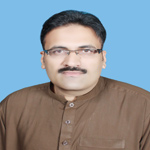GENDER
It is not known when and how the term gender came to be synonymous with women in both gender studies and development thinking. Although it is an established phenomenon that theoretically gender is about socially and culturally assigned roles, and that masculinities and femininities are rather biological terms that it means to be a man or woman; gender still has remained a female area.
 Quite predictably, the knowledge produced by gender studies and its counterpart in development studies called gender and development (GAD), has yet to achieve intellectual expansion as promised. The relationality of gender as a construct and men’s gendered being are thus taken for granted, and so the obsession with categorical thinking in terms of men/women continues even now.
Quite predictably, the knowledge produced by gender studies and its counterpart in development studies called gender and development (GAD), has yet to achieve intellectual expansion as promised. The relationality of gender as a construct and men’s gendered being are thus taken for granted, and so the obsession with categorical thinking in terms of men/women continues even now.
Gender planning from Women in Development (WID) to Gender and Development (GAD) has remained a robust narrative to the exclusion of men, where the latter are taken as the root of all problems. Men are generally seen as agents of oppression, for which it is assumed that power needs to be snatched from them.
There are others who feel that men should be cast as the oppressors until the disadvantages of women are redressed. Theses popular and selective responses have already given way to half truths and thus lack a holistic approach.
Gender inequality is believed to favour men, and GAD initiatives are directed to put an end to this inequality. By considering men as the problem in gender development and disregarding complexities involved in male experience, various gender-specific initiatives and programmes fail in achieving the desired outcomes and objectives that are vital for bringing social change on a large scale. As gender is about social and cultural roles assigned and power emanating from them, it has been ignored by mainstream development initiatives throughout the world and the movements from WID and GAD are still suffering from this stereotypical approach.
Gender, particularly contribution of women is recognised as vital for the success of any development initiative at both the international and national level.
Discriminatory approaches towards gender issues can limit access of women to basic facilities like education and health.
International development agencies like the United Nations Development Programme, United Nations Development Fund for Women, and Southern African Development Community, have given the concepts of gender responsive planning and budgeting to assess the impact of government’s allocation of resources on groups of men and women through recognising the ways in which gender relations have been interwoven in the society.
Macroeconomic policies of governments are geared towards improving human development indicators and reducing poverty, but all such efforts are hampered due to the failure to take gender relations as well as the specific needs of men and women into account.
International bodies are paying huge attention to gender equality and have included it in the Sustainable Development Goals (SDGs), as goal number five, which asks to “achieve gender equality and empower all women and girls”.
But all these initiatives may face a similar fate, as has happened in the past.
These initiatives cannot have any impact until and unless such actions are not complemented by legislative and legal measures. Pakistan, being a signatory to the SDGs is fully committed to bring gender equity in all spheres of its socioeconomic fabric.
However, gender disparity is still ranked high in the country, and there is a dire need to eliminate these disparities through legislation and implementation of the already enacted laws. Fast changing economic structures require that there should be similar grounds for promoting gender equity and equality through inclusion of various genders, irrespective of stigmatised approaches of the past. Disproportionate budgets have been allocated for various sectors of the government with meagre allocation for the social sector. This has worsened the situation with respect to the human development indicators of Pakistan.
Women represent more than 50 percent of the population, but they are earning quite less than their male counterparts. For the success of our organisations, for the nations and for the whole world, it is highly imperative that there are be equal opportunities for both males and females. It is an established fact that organisations that accommodate gender diversity practices attract and attain the best talent, which helps them excel among many others.
Men and women are typically put into careers that fit the stereotypes defined by norms, traditions and cultures. The developed world has a large chunk of women population in the industry and business. Globalisation too has helped mobilise a large number of women into the labour force. In China, more than 80 percent of the workers that make up the labour force of factories are young women.
Globalisation has also changed the status of current jobs, creating new jobs and thus rearranging the markets, but still higher jobs (designation and salary wise) are given to males in comparison to women. Globalisation does influence gender inequalities but not always negatively thus promoting females in the labour market.
It is the need of the hour to provide equal opportunities irrespective of gender preferences to empower the women of the country. The government needs to take pragmatic steps for the elimination of gender specific discrimination in resource allocation and decision making processes.
Policies on recruitment in both public and private sectors needs to be revisited, since more than half of the country’s population comprises women; the meagre quota must not be compromised. Education and awareness can always prove as weapons in the fight against gender inequalities across the globe. Creating awareness for gender equality in our villages, cities and society is the need of the hour.
The writer works at the Social Welfare and Women Development Department, Khyber Pakhtunkhwa